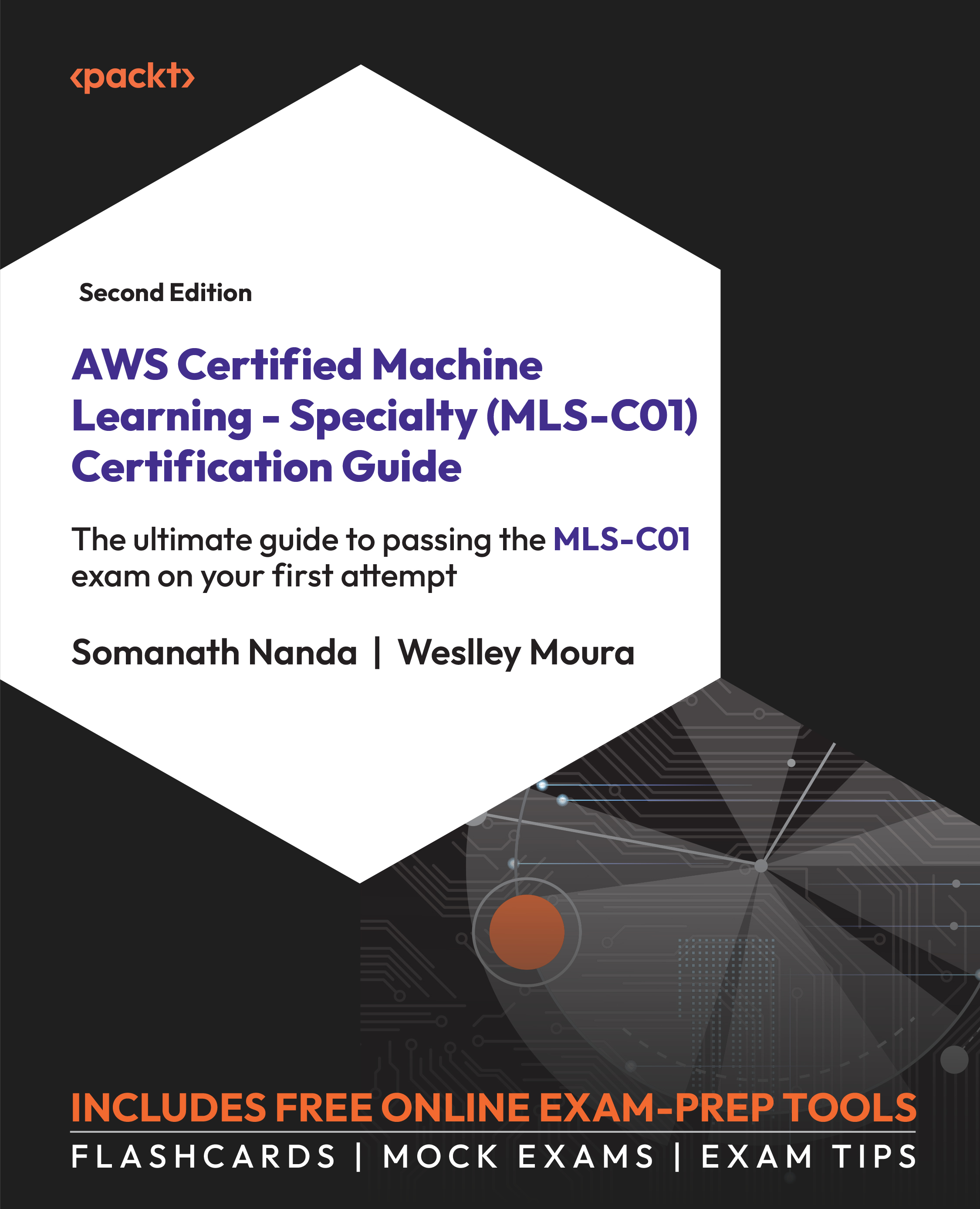What This Book Covers
Chapter 1, Machine Learning Fundamentals, covers some ML definitions, different types of modeling approaches, and all the steps necessary to build an ML product.
Chapter 2, AWS Services for Data Storage, teaches you about the AWS services used to store data for ML. You will learn about the many different S3 storage classes and when to use each of them. You will also learn how to handle data encryption and how to secure your data at rest and in transit. Finally, you will learn about other types of data store services that are also worth knowing for the exam.
Chapter 3, AWS Services for Data Migration and Processing, teaches you about the AWS services used to process data for ML. You will learn how to deal with batch and real-time processing, how to directly query data on Amazon S3, and how to create big data applications on EMR.
Chapter 4, Data Preparation and Transformation, deals with categorical and numerical features and applying different techniques to transform your data, such as one-hot encoding, binary encoding, ordinal encoding, binning, and text transformations. You will also learn how to handle missing values and outliers in your data, two important topics for building good ML models.
Chapter 5, Data Understanding and Visualization, teaches you how to select the most appropriate data visualization technique according to different variable types and business needs. You will also learn about AWS services for visualizing data.
Chapter 6, Applying Machine Learning Algorithms, covers different types of ML tasks, such as classification, regression, clustering, forecasting, anomaly detection, text mining, and image processing. Each of these tasks has specific algorithms that you should know about to pass the exam. You will also learn how ensemble models work and how to deal with the curse of dimensionality.
Chapter 7, Evaluating and Optimizing Models, teaches you how to select model metrics to evaluate model results. You will also learn how to optimize your model by tuning its hyperparameters.
Chapter 8, AWS Application Services for AI/ML, covers details of the various AI/ML applications offered by AWS that you need to know about to pass the exam.
Chapter 9, Amazon SageMaker Modeling, teaches you how to spin up notebooks to work with exploratory data analysis and how to train your models on Amazon SageMaker. You will learn where and how your training data should be stored in order to make it accessible through SageMaker and explore the different data formats that you can use.
Chapter 10, Model Deployment, teaches you about several AWS model deployment options. You will review SageMaker deployment options, creating alternative pipelines with Lambda functions, working with Step Functions, configuring auto scaling, and securing SageMaker applications.
































































